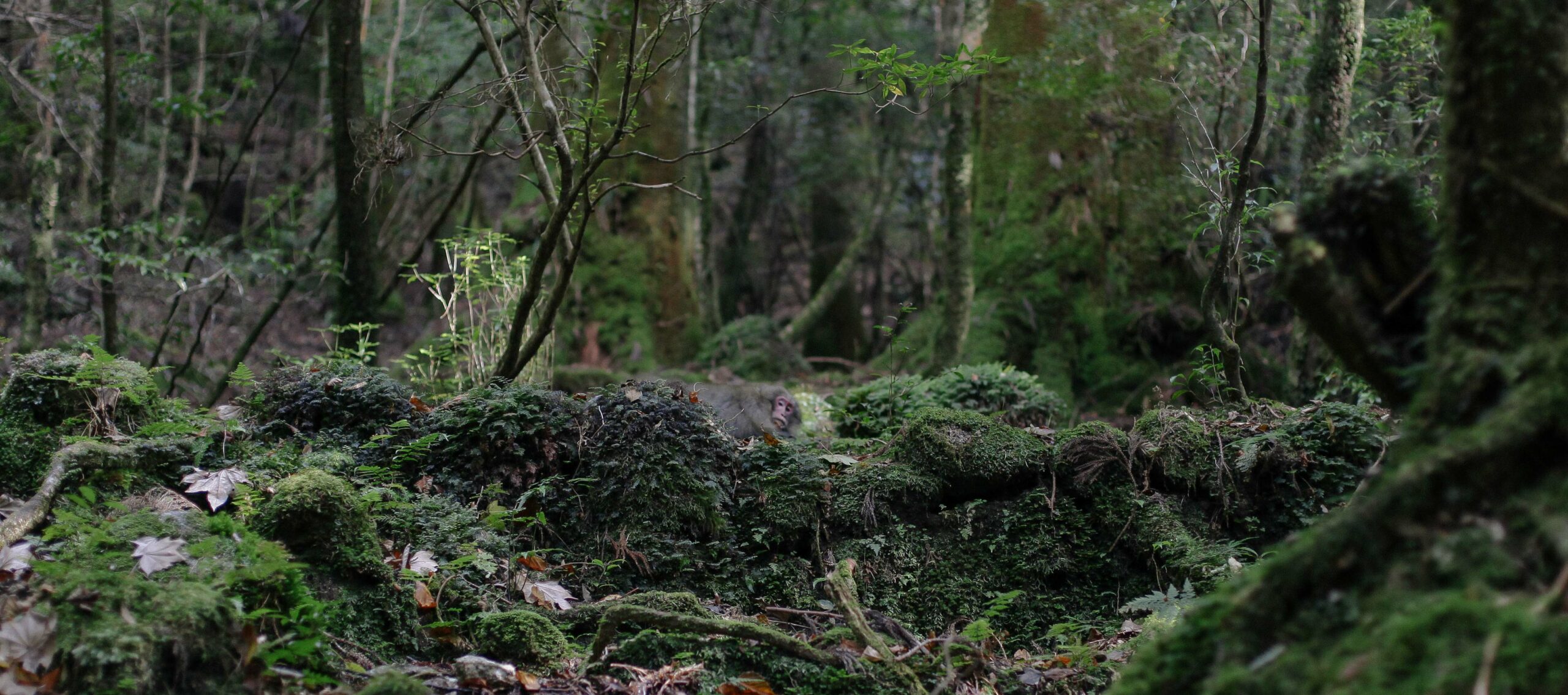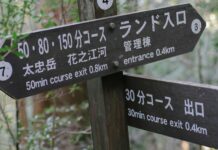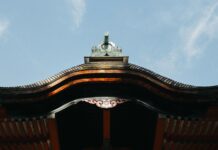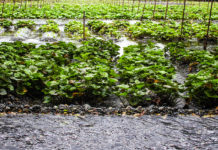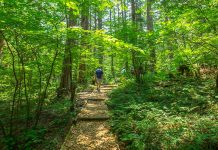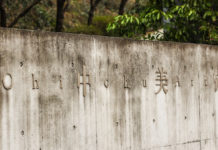Shiratani Unsuikyo (The Shiratani Gorge) lies in the northeast quadrant of Yakushima’s circular landmass. From Yakushima’s Miyanoura port, the entrance to the hiking trails is only a 20-30 minute drive, making it an ideal first stop on a visit to the island.
The main attraction within Shiratani Unsuikyo is the ‘Kokemusu Forest’, simply named the ‘Moss Forest’ in English. Much of Yakushima Island served as visual inspiration for Studio Ghibli’s 1997 masterpiece, Princess Mononoke. Shiratani Unsuikyo is credited as being the key site of influence for Ghibli director Miyazaki Hayao. Photographs taken during his pre-production trips around the island have previously been on display in Tokyo’s Studio Ghibli Museum.
For those familiar with this profoundly moving film, Shiratani Unsuikyo’s deep ravines and glimmering carpets of moss will immediately evoke scenes of the film’s animated version of the gorge. If you’re lucky (and quiet), you may even catch sight of a disinterested macaque or two, hidden in plain sight among the undergrowth of the thick, gnarled trees. Spotting our primate cousins watching us from within the forests serves as a poignant reminder that it is we who are the guests in their home.
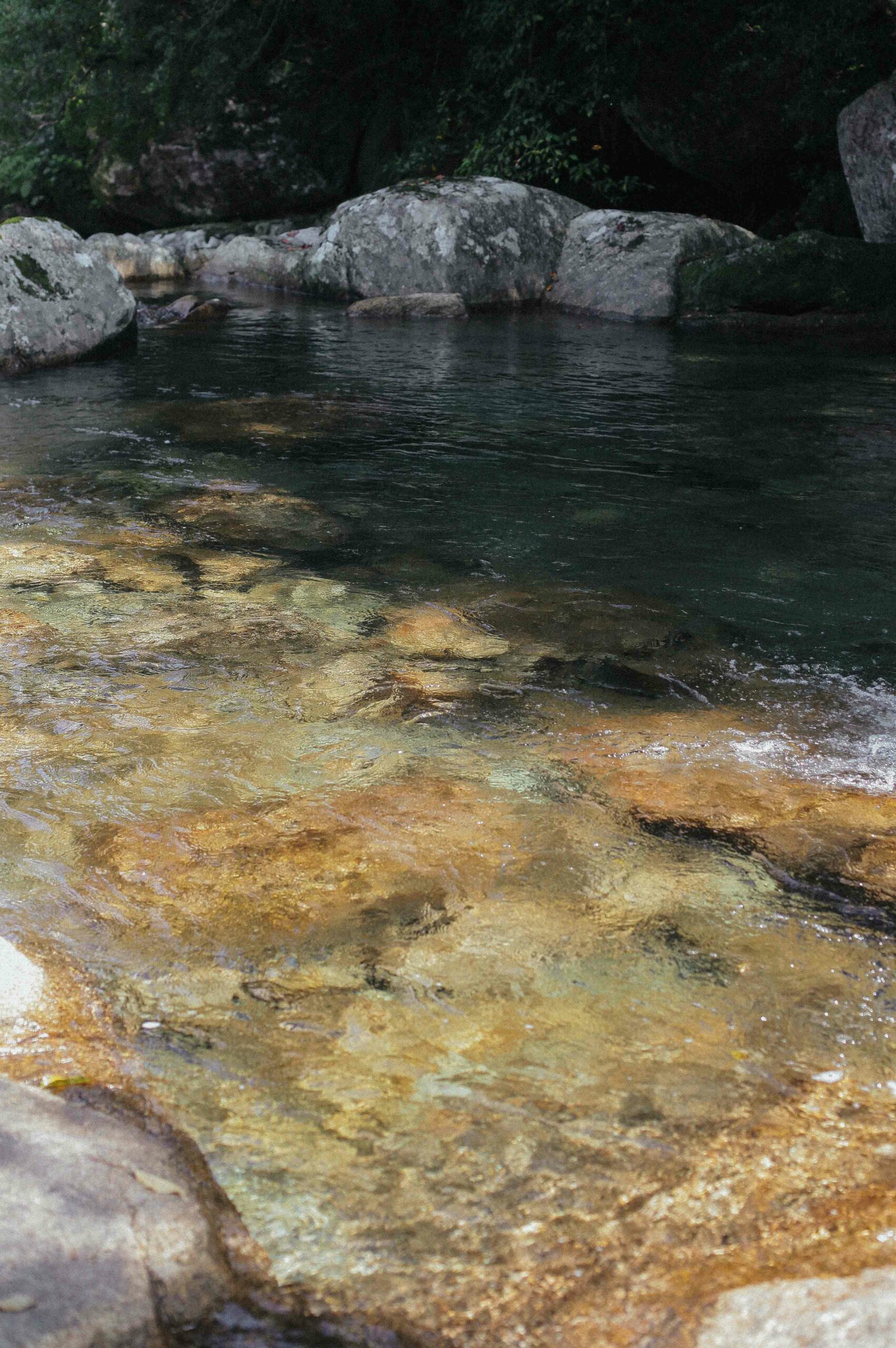
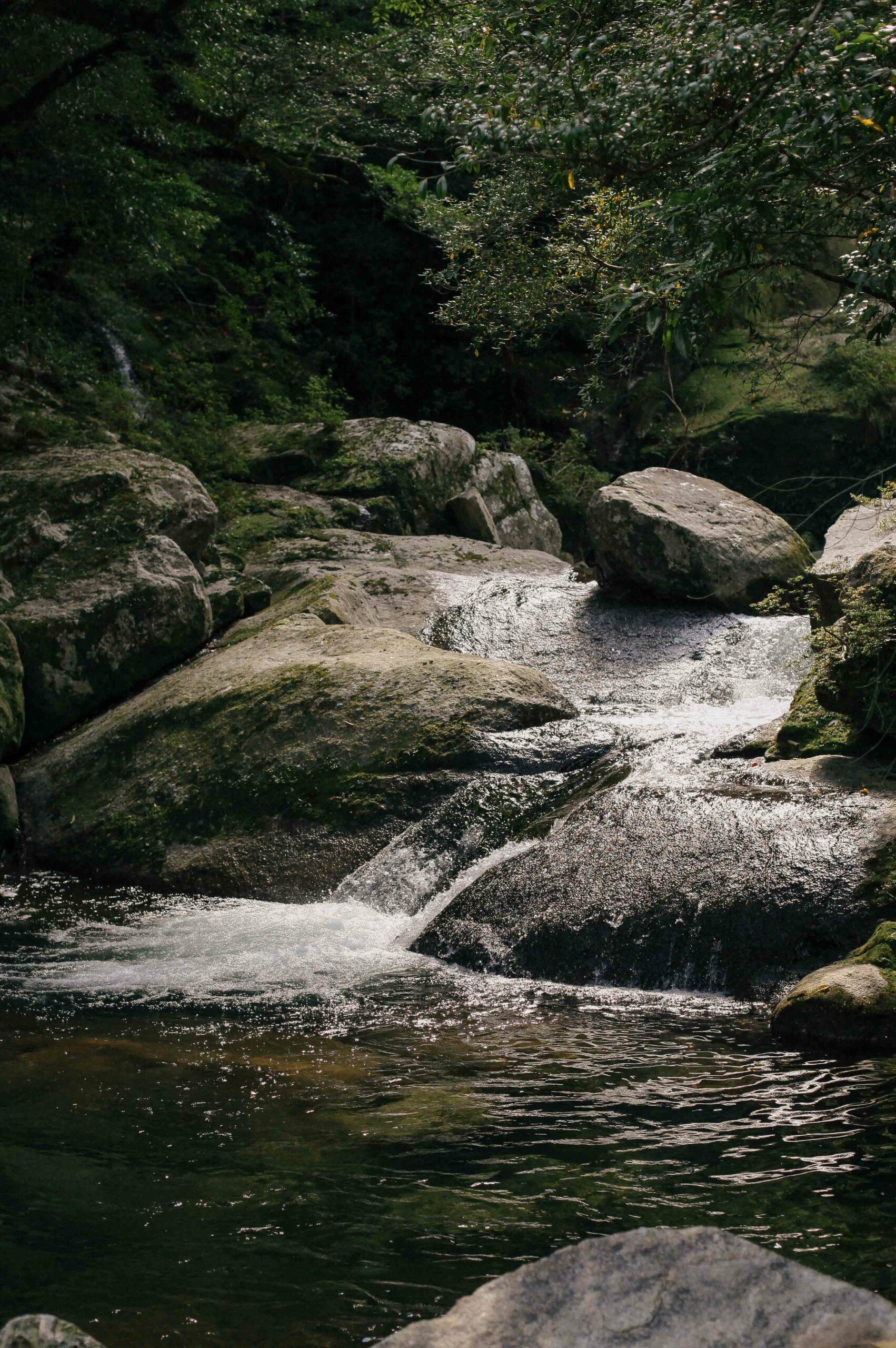
Shiratani Unsuikyo’s entrance and parking site is geographically close to Yakushima’s main sea port, but the majority of the travel time is spent on the twisting mountain roads. It’s essential to drive slowly and carefully on these routes, as you’re likely to encounter other cars and buses. You may also come across entire families of macaques languidly sunbathing on the warm road surfaces.
The mountain ascent by car offers unbeatable views down into the outer valley of Shiratani and away into the endless blue of the Pacific Ocean. There’s ample parking available on weekdays, especially when you’re not visiting during the peak summer hiking season. The ‘base’ area also has excellent public toilets (because, Japan). Trails of multiple lengths are available for hikers of all capabilities. Unlike nearby Yakusugi Land’s circular courses, Shiratani’s routes are a mix of circular and linear, all following the same path at their start. However, here too, the modest ¥500 entrance fee buys you a paper map, the rental use of a hiking stick and covers the year-round care and maintenance of the trails and surrounding woodland.
Shiratani Unsuikyo is home to the boulder-strewn ravines that are characteristic of many of Japan’s mountain regions, with rivers of water so clear they’re almost invisible when pooled. Unfortunately, swimming in these enticing pools is not permitted, for reasons of safety and of ecological caretaking. It’s a shame, as there’s no better way to end a sweaty hike than with a plunge into a fresh mountain pool. However, the water can be deceptive, with unpredictable and deep currents rushing over snags and debris that can’t be seen from the surface.
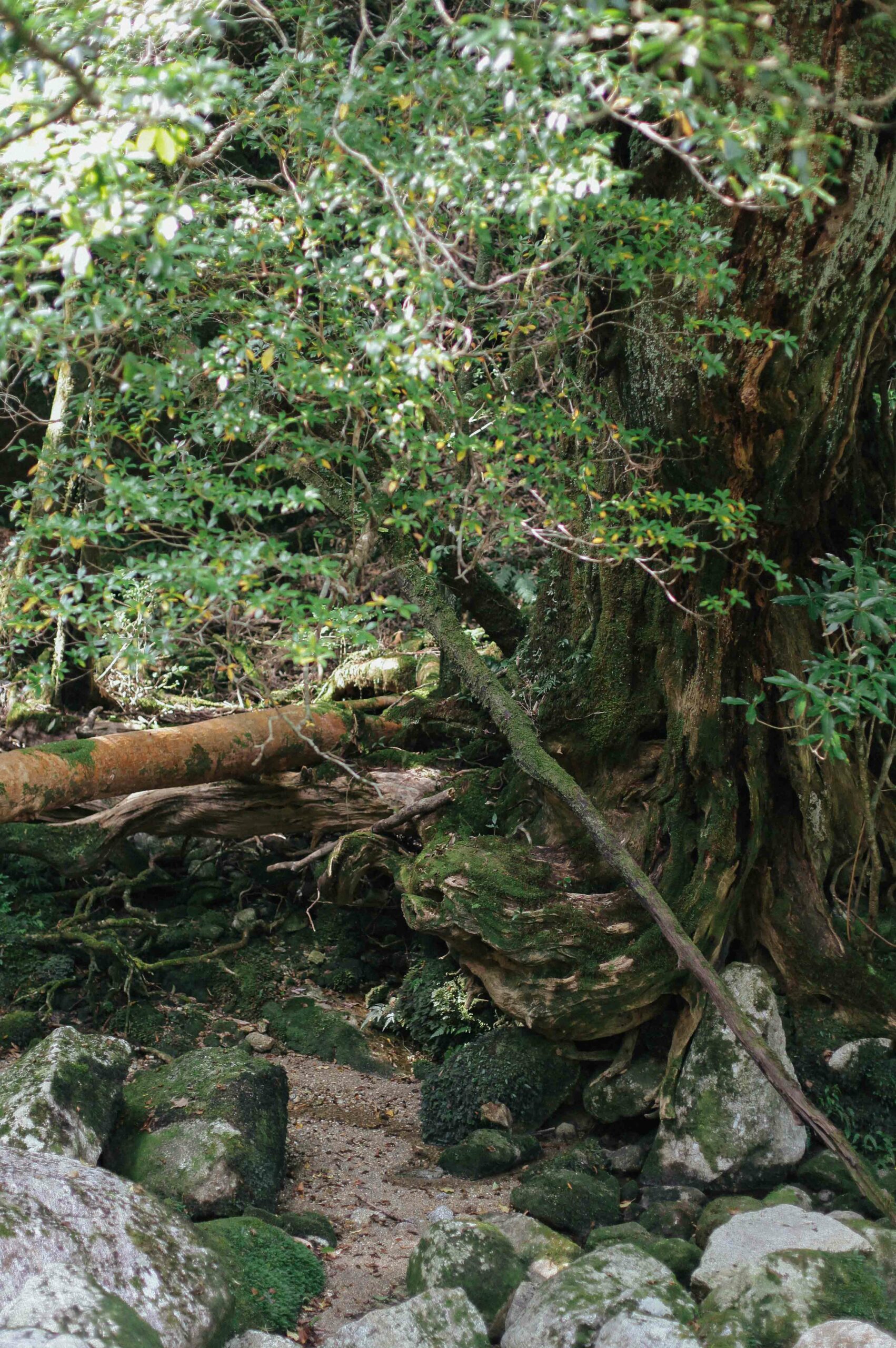
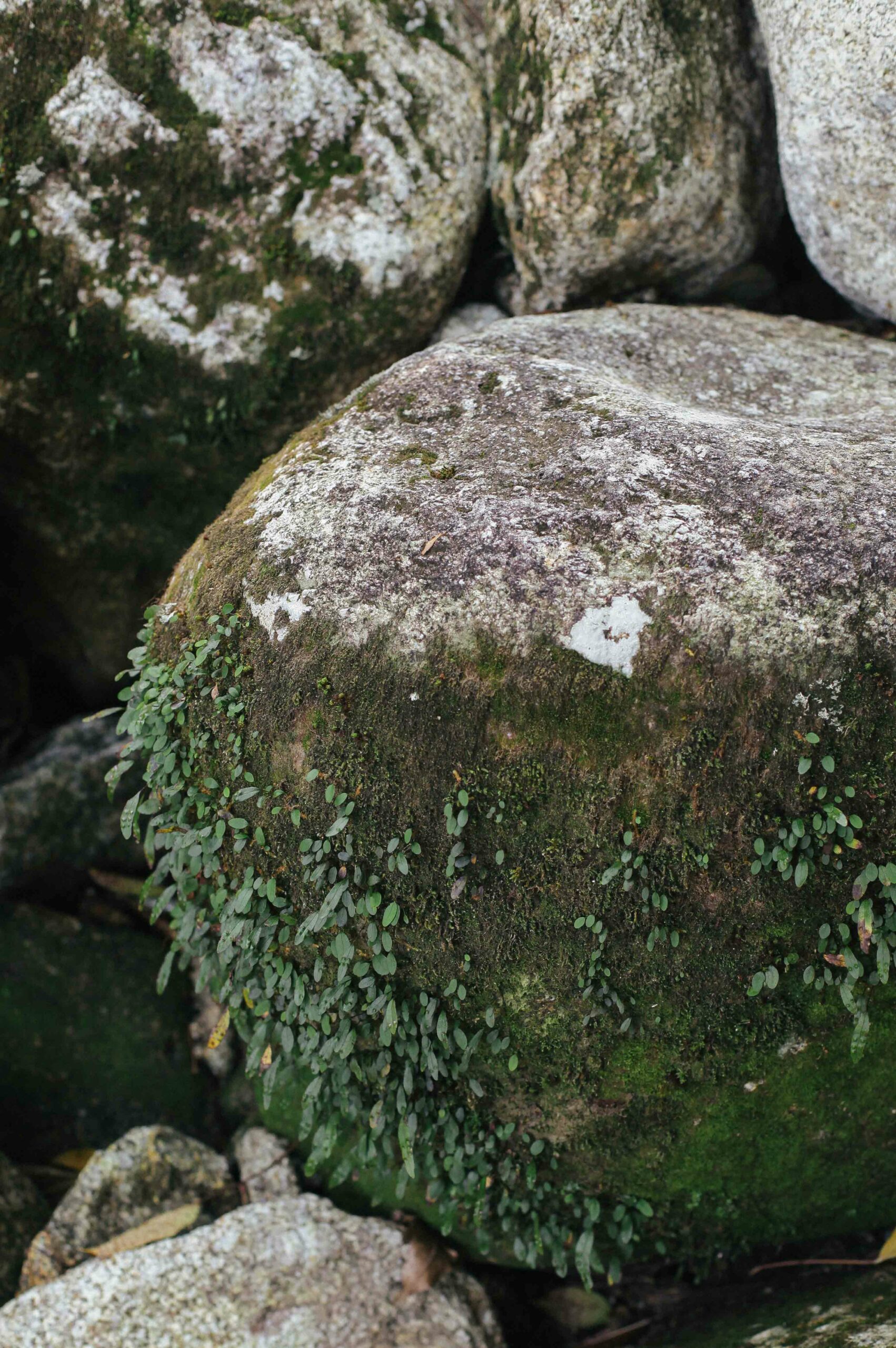
Mossy ravines are self-contained ecosystems, formed over millions of years into a kind of physical geography that sustains its bio-region from within. The constant downward flow of water creates an environment high in humidity, with the enclosing canopy of the dense forest preventing this humid air from being blown away by mountain breezes. This creates a convection system, where humid air rises and falls in cycles; a kind of closed loop. It’s almost like a glass terrarium, but on a far larger scale.
Beyond the limits of its forest canopies, Yakushima creates and maintains its own weather systems, independent of the Japanese mainland or nearby islands.. This usually means high levels of rainfall throughout the year. Be sure to pack waterproofs! The mountainous centre of the island experiences between 8,000mm and 10,000mm of rainfall throughout the year — double the average for mainland Japan. However, it’s not uncommon to have consecutive days of clear skies across the whole island, especially in October, when the localised summer transitions to autumn.
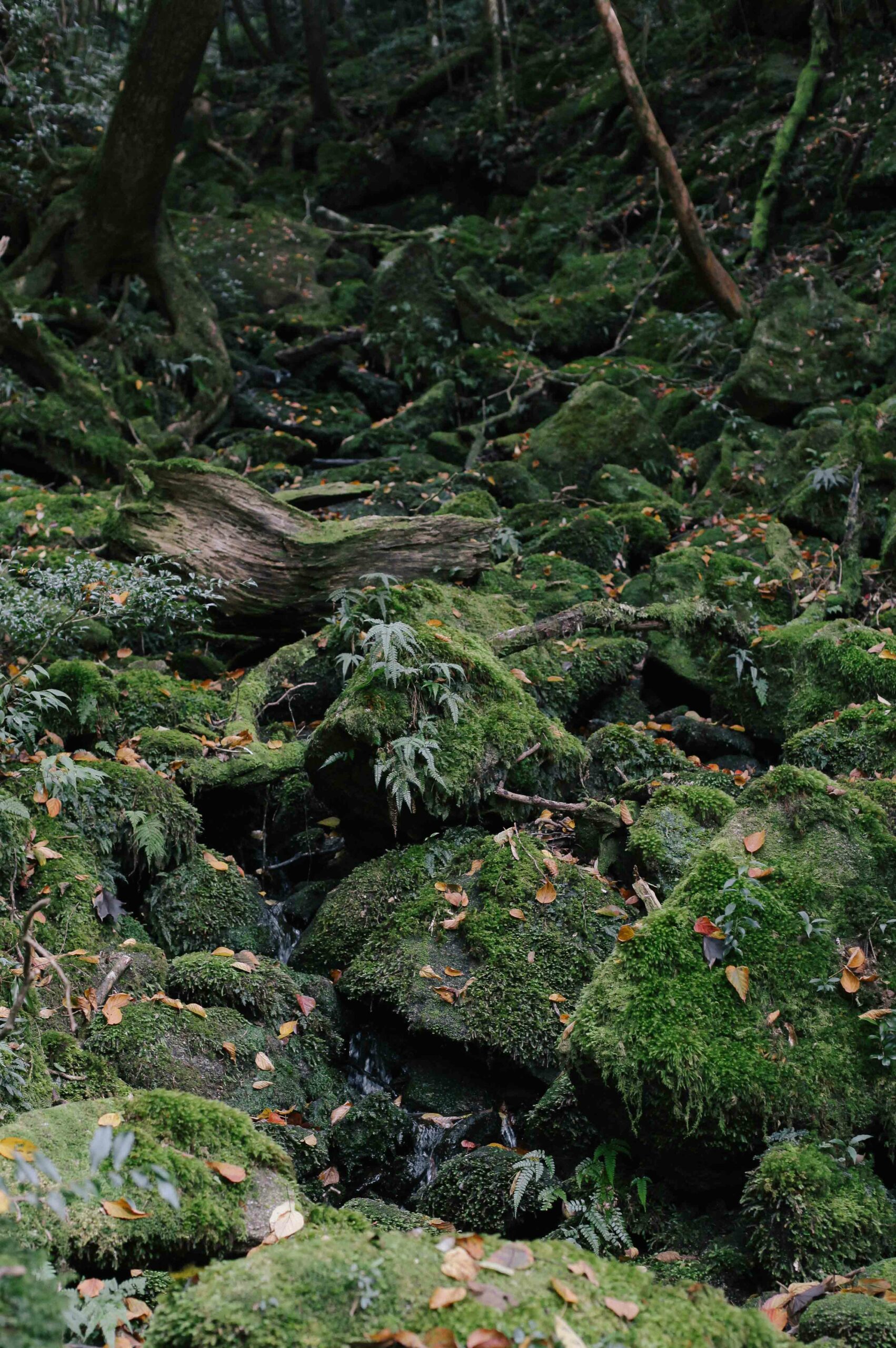
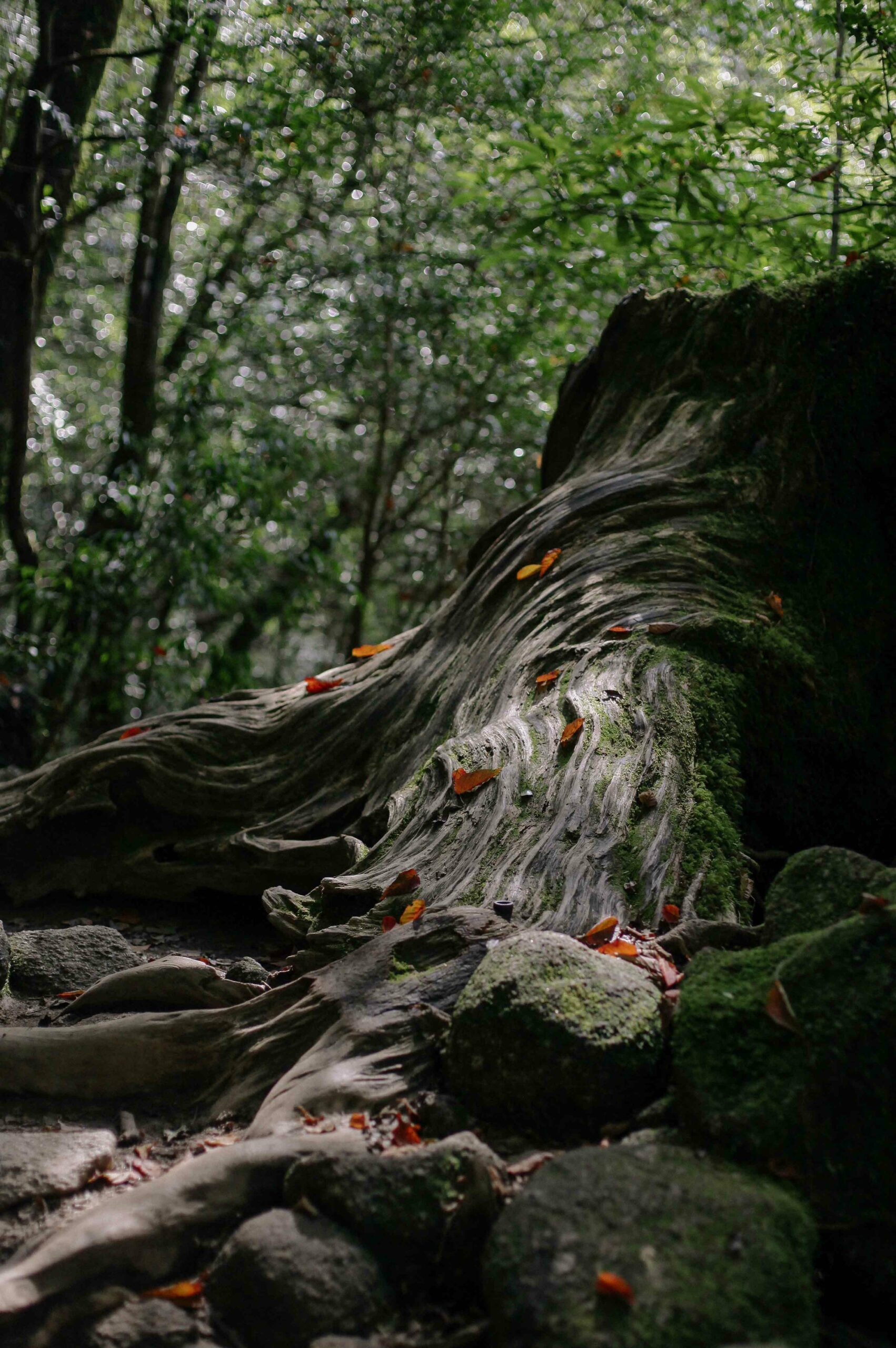
While they’re not quite as arduous as a ten-hour round hike to the Jо̄mon-sugi, Shiratani Unsuikyo’s trails can offer a considerable challenge to more experienced hikers. Post-volcanic forests create naturally tricky terrain: tree roots to climb (or trip over), boulders of all sizes, with ankle-twisting dips and snags between slippery wooden trail boards. It’s all part of the fun, though, and encourages a slower and more mindful kind of transit.
Shiratani Unsuikyo is the ideal place to practise the art of ‘slow hiking’ — which is easy enough if you’re not relentlessly athletic (hello, that would be me). However, it forces the more frantic walker to relax their pace and really feel the forest. Feeling the forest is, on Yakushima, the entire point. It’s a place of spirit and ambience, a chance to stop and appreciate the complexity of the natural world, tuning in to the deeper cycles of forest time. The endless rush of human life doesn’t need to follow you into the verdant interior of this place, and by starting your hike earlier in the day, you’ll be able to amble up and down before the sun dips behind the mountain.
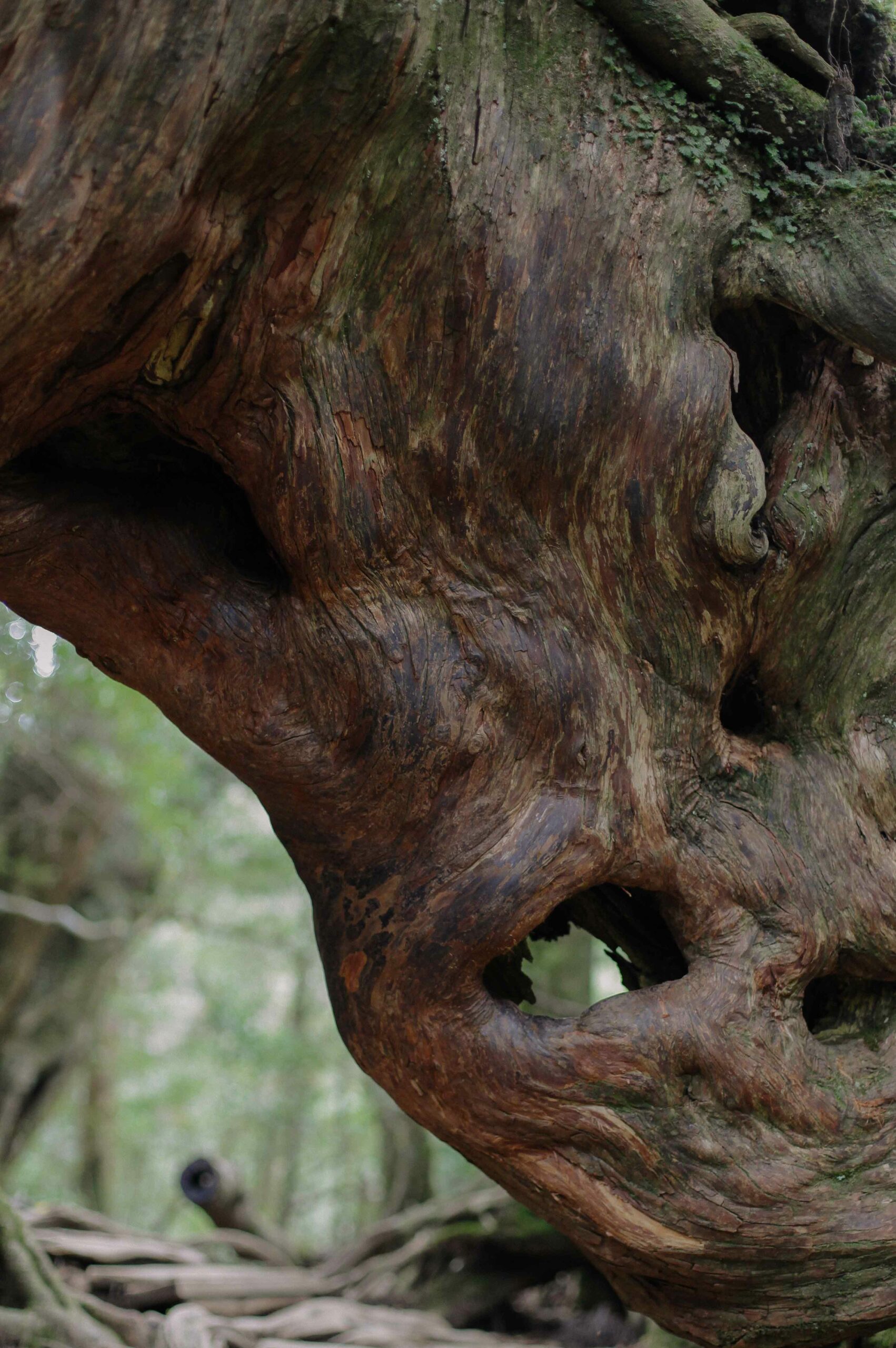
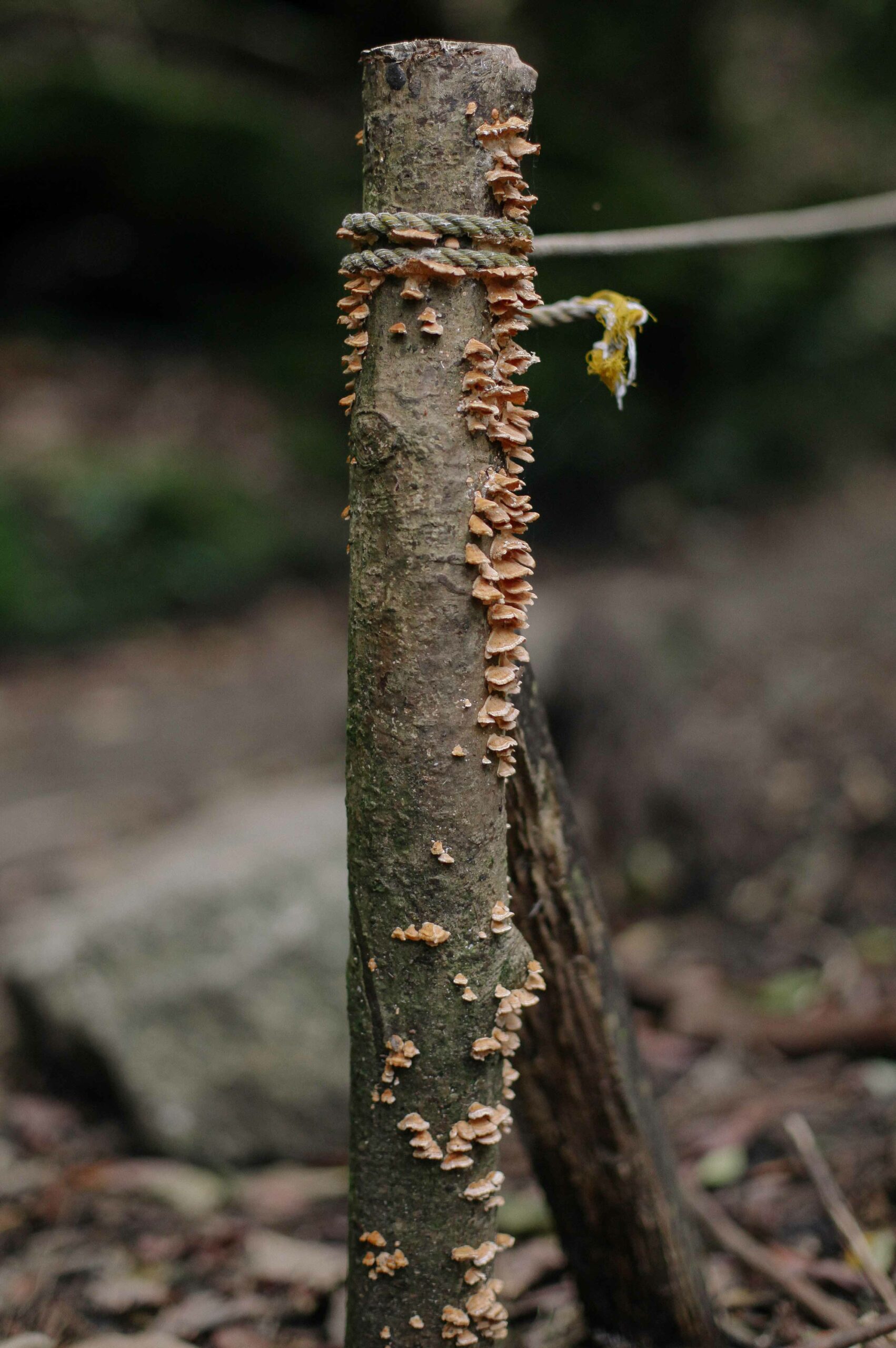
Shiratani Unsuikyo’s self-contained ecosystem creates an environment that often feels otherworldly. Although it grows from an extinct volcano in the Pacific Ring of Fire, the gorge evokes a universal sense of the mythical. Many people will be familiar with the role of forests in folklore and legend; that they are spaces alive with rules and realities that take us far from the familiar. Here too, as across all of Yakushima, towering Yakusugi (Cryptomeria japonica) pierce the lower canopies, wrapped in the twisting sinews of Trochodendron aralioides, the ‘Japanese Wheel Tree.’
Deep carpets of moss coat almost every surface, reflecting the light from above back into the forest interior. This light refraction creates a kind of green luminescence, which appears to come from within the forest itself. Tree trunks drip with epiphytic ferns, like the shaggy green mane of some impossible beast. Shapes shift with the light; twisted roots take on the texture of sinew and the form of fleshy limbs. It’s easy to imagine how mind-altering this space would be in the absolute blackness of night, although it’s surreal enough in daylight hours.
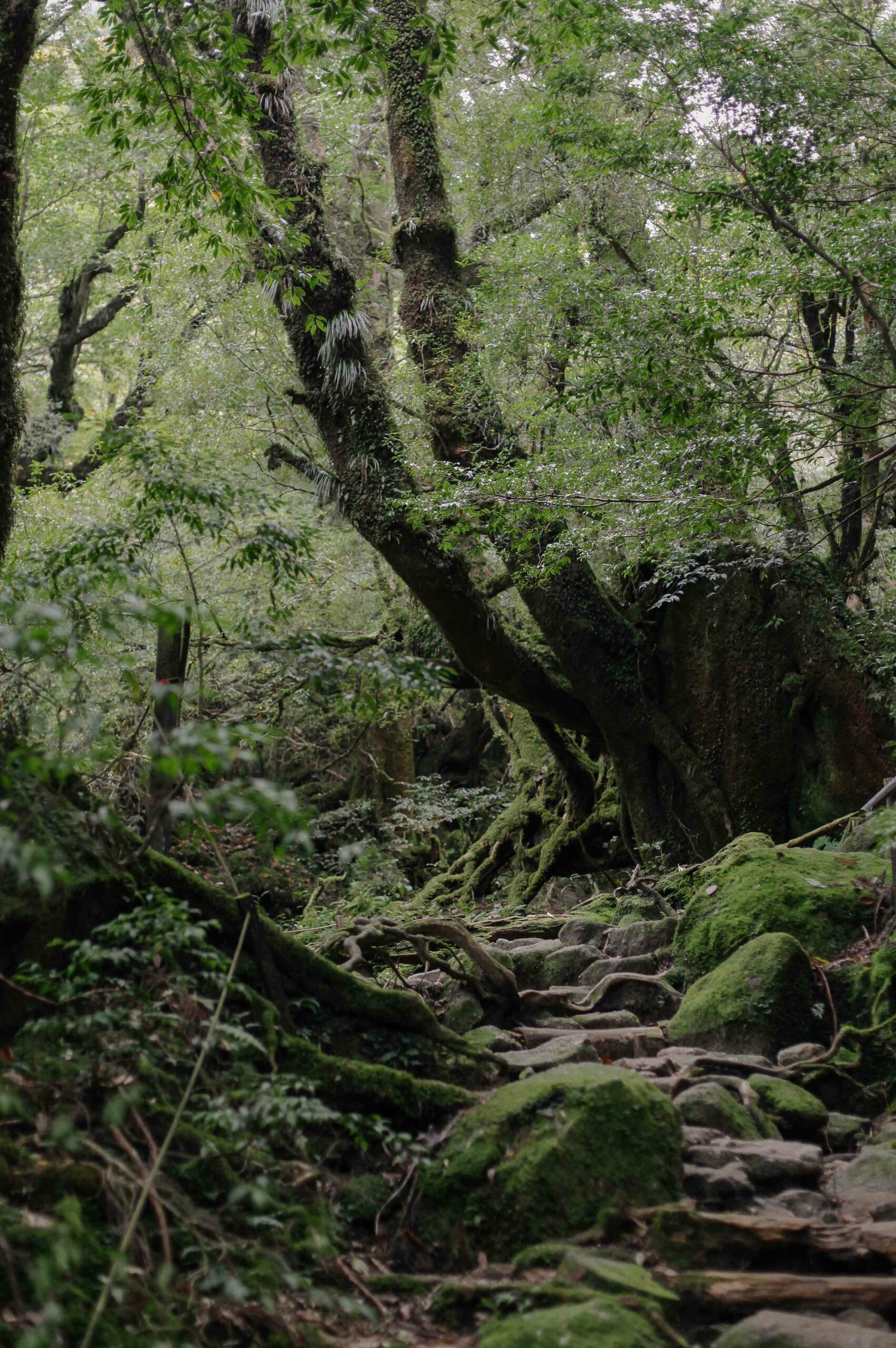
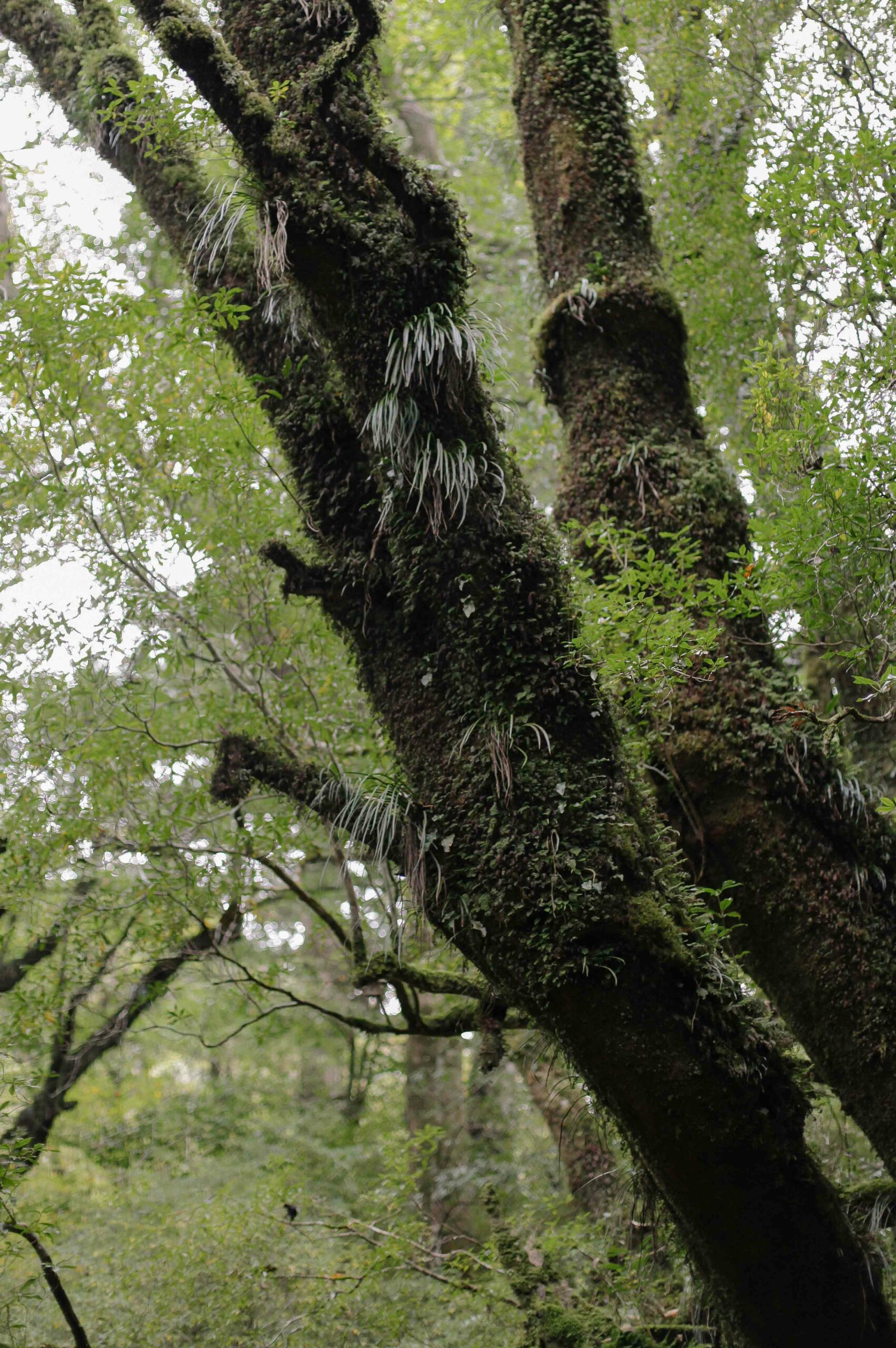
Shiratani Unsuikyo is not only shades of green. The range of fungal life within the forest is immense, although much of the activity happens within the soil, thus remaining a mycological mystery to us. You can occasionally spot the berry-pink hues of the ‘Yakushima birdlime’ (Balanophora yakushimensis) sitting atop a cushion of moss, or multiple types of bracket fungi climbing steadily up decaying tree trunks. Throughout spring and summer, tropical flowers explode from a sea of green. The island is home to Japan’s most diverse community of flora, ranging from spotted toad-lilies to vanishingly rare orchids.
Any amount of time spent wandering through these trails is deeply satisfying. The forest interior is varied and wondrous, offering an uplifting experience no matter your level of fitness. In order to see Kokemusu Mori (The Moss Forest), you’ll need to take the ‘Taikoiwa Round Trip Course’, highlighted in green on the map which all visitors are given. However, these courses are completely flexible, allowing for spontaneous changes of mind. You can stop and head back after your moss immersion, or retrace your steps and divert onto the ‘Bugyо̄sugi Course’, which takes you through a more physically demanding terrain, to tour some of the gorge’s most spectacular ancient cedars.
The courses are always clearly marked with signposts and neon fabric ties at frequent intervals. Even during quieter seasons, Shiratani Gorge is a popular hiking destination, and you’ll likely pass other hikers every few minutes, so there’s no need to worry about getting lost.
Here, as with Yakusugi Land, there are no sites selling food. Be sure to stock up on supplies before you set out for the day, and bring a spare bag to bring your refuse home with you. All sites on Yakushima welcome the use of hiking poles, but the sharp ends must be covered with flat rubber caps, to protect the delicate topsoils and mosses of the forest floor.
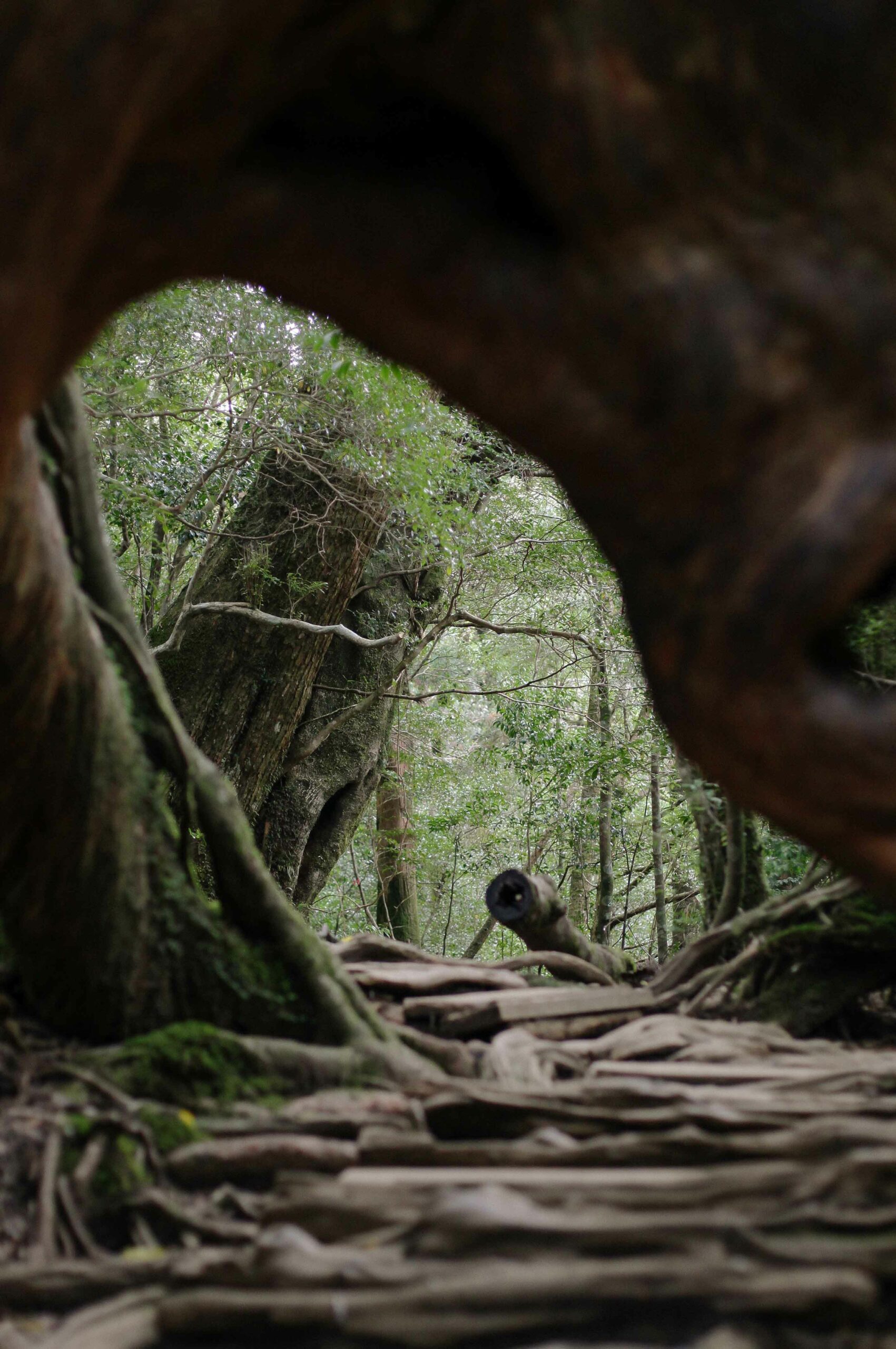
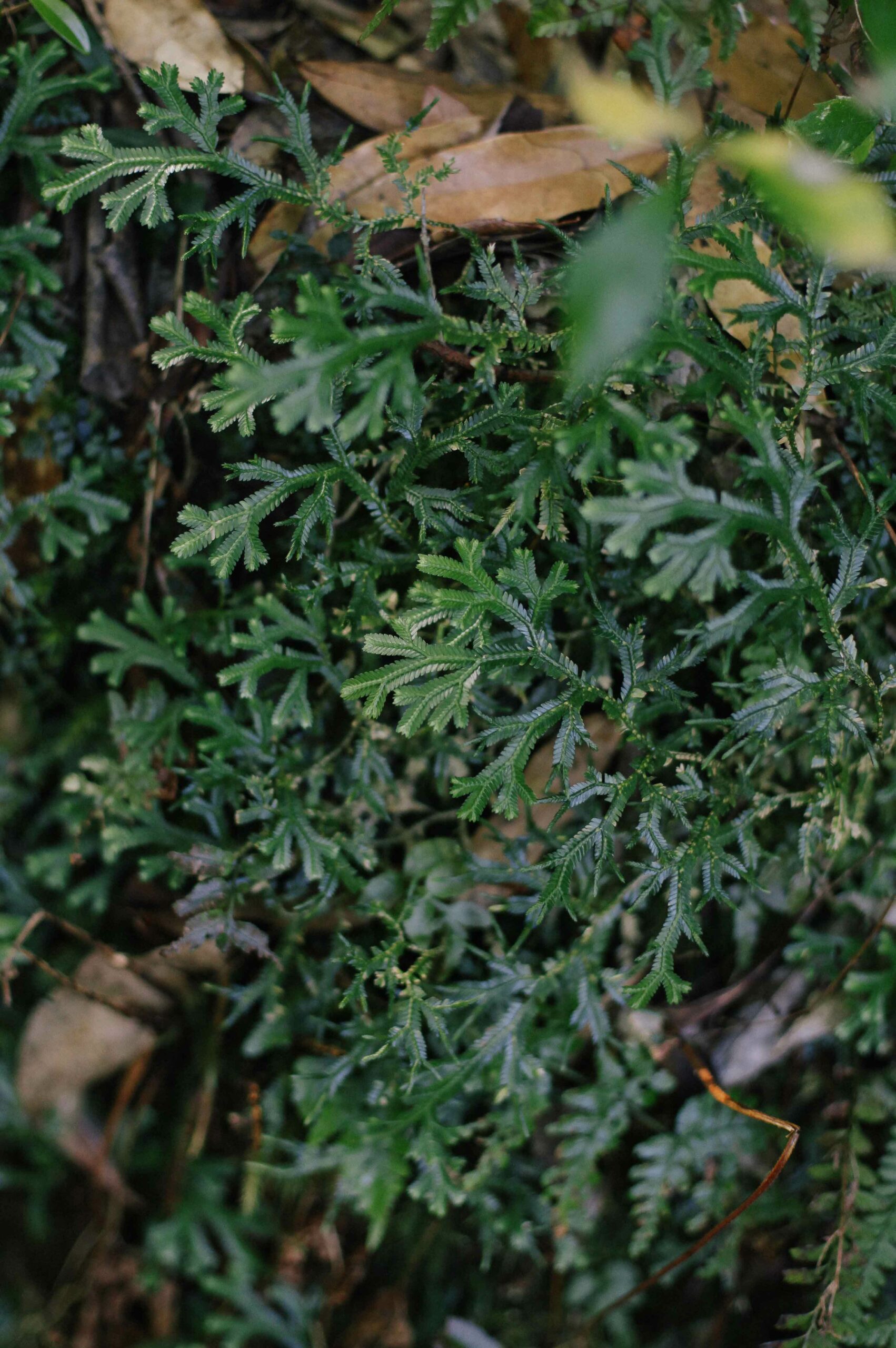
Access:
Name: Shiratani Unsuikyo (Shiratani Gorge)
Address: Miyanoura, Yakushima, Kumage District, Kagoshima 891-4200, Japan (this is not usable for satellite navigation. This link will offer a Google Map route).
Open: 8:30am–5:00pm for the ticket office.
Admission: ¥500 donation for forest maintenance.
Website: https://www.kagoshima-kankou.com/guide/10740
A map of Shiratani Unsuikyo is viewable here:
Post by Japan Journeys.



